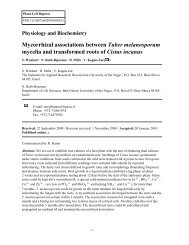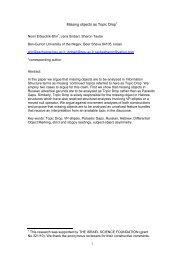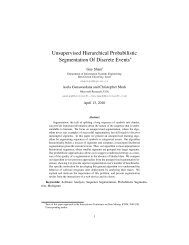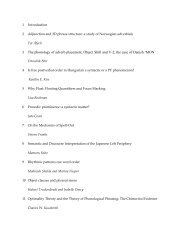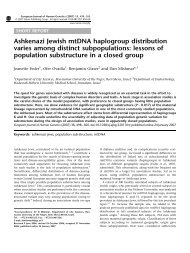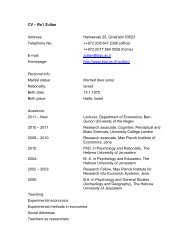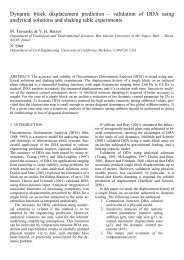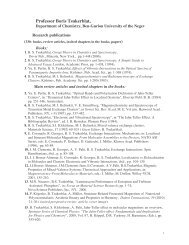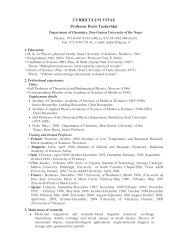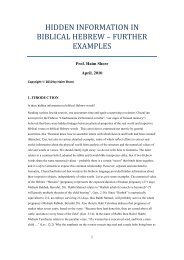Generics, Frequency Adverbs, and Probability
Generics, Frequency Adverbs, and Probability
Generics, Frequency Adverbs, and Probability
You also want an ePaper? Increase the reach of your titles
YUMPU automatically turns print PDFs into web optimized ePapers that Google loves.
only world open to our inspection is the actual one, but under any reasonable<br />
conception of normality, the actual world is not normal. How, then, can<br />
we tell what things are like in a normal world? And how can we judge the<br />
truth values of generics <strong>and</strong> frequency statements, if such judgments require<br />
knowledge of normal worlds?<br />
Admissible histories, in contrast with normal worlds, are not opaque.<br />
While it is true that admissible histories cannot be observed in their entirety<br />
in the actual world, we are in a position to observe their initial segment,<br />
since all admissible histories continue the relevant part of the actual history.<br />
Thus, the longer the relevant actual history, the more information we have<br />
regarding the admissible histories, <strong>and</strong> the more confidence we have in extrapolating<br />
their properties. This approach provides a direct link between<br />
observations in the actual world <strong>and</strong> the truth judgments of generics <strong>and</strong> frequency<br />
statements: while not completely determining such truth judgments,<br />
observations in the actual world help us extrapolate to admissible histories,<br />
with respect to which we make our truth judgments. No such link is provided<br />
by theories which propose that generics <strong>and</strong> frequency statements are<br />
expressions of normality.<br />
The only requirement from an admissible history is that it continue a<br />
regularity observed throughout a sufficiently long sample in the actual world.<br />
In particular, we need not postulate any rules or laws which hold in an<br />
admissible history. Presumably, an observed regularity does follow from some<br />
rule, be it physical, social, genetic, or whatever; but importantly, we need<br />
34




